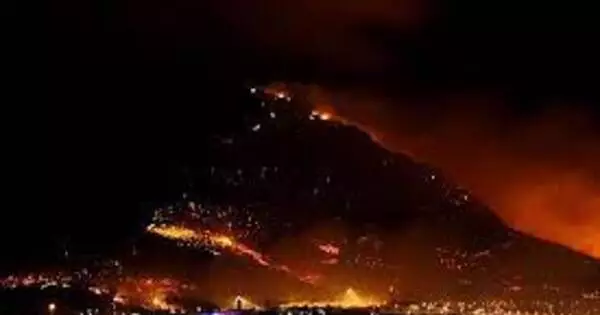According to one study, climate change is causing an unprecedented change in Europe’s fire regime. The affected areas are located in Southern, Central, and Northern Europe, but this historical shift in Europe’s fire regime is more intense in the Mediterranean region. Jofre Carnicer, lecturer of Ecology at the Faculty of Biology and member of the University of Barcelona’s Biodiversity Research Institute (IRBio) and the Centre for Ecological Research and Forestry Applications, led the study, which was published in the journal Scientific Reports (CREAF).
Distinguished climatologists, experts on forest fire risks, and forestry ecology are among the study’s authors, as are members of an international consortium of research institutions that includes the UB, CREAF, the Intergovernmental Panel on Climate Change (IPCC), the European Centre for Medium-Range Weather Forecasts (ECMWF), the Institute for Environmental Research and Sustainable Development of the National Observatory of Athens, the European Space Agency (ESRIN), and the University of British Columbia.
Spring and summer seasons with a high fire risk
The study discovered summer and spring seasons with unprecedented levels of fire risk in recent years, implying that many areas of southern Europe and the Mediterranean are experiencing extreme fire conditions. Due to the increasing frequency of heatwaves and hydrological droughts, these adverse conditions are becoming more common.
Forest and mountain areas in southern and central Europe are the areas where the highest fire risks are detected. These areas are large carbon sinks that would be threatened by the fire, such as the Pyrenees, the Iberian and Cantabrian massifs in Spain, the Alps, the French central massif, the Italian Apennines in central Europe, the Carpathian Mountains, the Balkans, the Caucasus and the Pontic in the southeast area of Europe.
Jofre Carnicer
“This increase in extreme fire risk is quite recent, and at critical times it exceeds the fire-fighting capabilities of European societies, causing higher CO2 emissions associated with fire in extremely hot and dry summers,” says Jofre Carnicer, first author of the study and member of the UB’s Department of Evolutionary Biology, Ecology, and Environmental Sciences.
Forests and carbon sinks, threatened
The study attributes the increase in fire risk to an increase in fire-induced CO2 emissions as measured by satellite over the European continent. This phenomenon is occurring not only in Mediterranean Europe, but also in colder, northern, and boreal Europe, where tundra and boreal forests serve as important carbon sinks.
Estimates of fire risk and impact based on meteorological data and satellite detection of fire impact have evolved over time. This is the first time that a recent increase in fire risks due to weather conditions has been detected, and it translates into a significant increase in fire-related CO2 emissions during periods of extreme heat and fire danger in summer.

“Forest and mountain areas in southern and central Europe are the areas where the highest fire risks are detected,” notes Jofre Carnicer. “These areas are large carbon sinks that would be threatened by the fire, such as the Pyrenees, the Iberian and Cantabrian massifs in Spain, the Alps, the French central massif, the Italian Apennines in central Europe, the Carpathian Mountains, the Balkans, the Caucasus and the Pontic in the southeast area of Europe.”
The study provides continental maps of fire danger and predicts the evolution of the fire risk in Europe until 2100, through different trajectories of climate change (2ºC, 4ºC) and reduction of CO2 emissions.
“The findings suggest that the fire regime in regions affected by climate change, such as the Mediterranean, Euro-Siberian, and boreal areas of Europe, could rapidly change,” says the researcher.
“”The most significant increase in fire risk will affect areas in southern Europe that have forests and carbon sinks that are critical for climate regulation,” says the expert, adding that “the forests in the European continent absorb about 10% of total emissions from greenhouse gas emissions annually.” They capture around 360 million tons of CO2 per year, which is more than a country like Spain’s emissions, which are estimated to be around 214 million tons.”
The study’s findings pose a challenge to the development and implementation of the new European Forestry Strategy, which aims to maintain an annual reduction of at least 310 million tons of CO2 from the forestry and agricultural sectors in Europe by 2030. As a result, the detected increase in fire risk may jeopardize decarbonization strategies based on forest and land use if effective forest management strategies to reduce these risks are not implemented,” Carnicer emphasizes.
“Furthermore, an increase in this risk may trigger a positive feedback mechanism on climate change, resulting in progressive cycles of warming, increased fire danger, and higher fire-induced CO2 emissions. In this context, drastically reducing CO2 emissions over the next two decades (2030-2040) is critical for achieving a lower risk of fires in Europe and around the world” According to the study’s author.
















